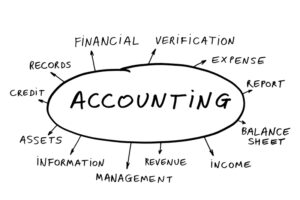 We have a client whose accounting activity functioned for years under the direction of non-accounting management, not uncommon among smaller privately owned companies whose limited resources often put accounting last on the shopping list. In this case, as we began working together, the primary obstacle was the difficulty in making sense out of their financial statements because of the plethora of bookkeeping accounts – over 300 of them, many set up to contain a few transactions that were considered unique, some including bank accounts that were opened to isolate funds intended for a certain purpose, like the down payment on the purchase of a piece of equipment. It was nearly impossible without some analysis to determine something as basic as gross profit margin. This company with sales under $10 million a year – and no manufacturing activity – had at one point 16 checking accounts open at the bank, each of which had to be reconciled monthly to make sure everything got recorded correctly. You can guess how that went. (I remember my grandmother keeping several cookie jars, each one to collect cash for groceries, the utility bill, the rent, etc. It worked for grandma but not so much for a company that needs to manage a much broader range of financial activities.)
We have a client whose accounting activity functioned for years under the direction of non-accounting management, not uncommon among smaller privately owned companies whose limited resources often put accounting last on the shopping list. In this case, as we began working together, the primary obstacle was the difficulty in making sense out of their financial statements because of the plethora of bookkeeping accounts – over 300 of them, many set up to contain a few transactions that were considered unique, some including bank accounts that were opened to isolate funds intended for a certain purpose, like the down payment on the purchase of a piece of equipment. It was nearly impossible without some analysis to determine something as basic as gross profit margin. This company with sales under $10 million a year – and no manufacturing activity – had at one point 16 checking accounts open at the bank, each of which had to be reconciled monthly to make sure everything got recorded correctly. You can guess how that went. (I remember my grandmother keeping several cookie jars, each one to collect cash for groceries, the utility bill, the rent, etc. It worked for grandma but not so much for a company that needs to manage a much broader range of financial activities.)
The point of my story is this: The goal of financial reporting is to present the financial results of the business in a way that facilitates understanding and sound decision-making. And the fundamental tool for organizing that data is the Chart of Accounts, the system for categorizing all financial transactions into meaningful segments. My definition of meaningful: reports will communicate, even to non-financial readers, the results of the period’s activity in terms of:
This is not to say that financial reports don’t need to come with analysis and commentary from the financial department, but that analysis should focus on why things happened, not what happened. The Chart of Accounts – when properly constructed and correctly used – does the job of grouping accounting data into logical and understandable segments. If you can’t instantly tell a company’s gross profit margin, its sales and marketing expense, its contribution margin, its operating income vs. its net income, and more, you’ve got a problem. It’s one of the first things we look at when taking on a new client, because it tells us so much about why their financial reports look as good, or as bad, as they do. How can we get so much information from a table of numbers? Because that’s what we do.
We are Your CFO for Rent.
© 2024 CFO For Rent - Western Management Associates. All rights reserved. Website by Avodah Web Solutions.